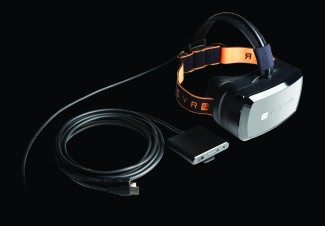Razer Chief Executive and co-founder Min-Liang Tan has stated his company’s intent to dominate China’s rapidly growing virtual reality market, with new products built around the OSVR platform, tailored to the region launching next month.

Razer, along with VR specialists Sensics, is the driving force behind the Open Source Virtual Reality movement, launched during CES 2015 along with the platform’s flagship VR headset, the Hacker Development Kit (HDK). The idea behind OSVR is to encourage a free-flowing exchange of ideas by providing standardised software and hardware interfaces upon which enthusiasts and businesses alike can help the VR system evolve. That’s the theory at least.
Now, CEO and Co-founder of Razer, Min-Liang Tan, has gone on record saying that they have the fledgling Chinese virtual reality market, predicted by iiMedia to be worth 55 Billion Yuan (over $8bn USD) by 2020, firmly in their sights, and intend to dominate it. In an interview with the South China Morning Post Tan said that “We are going to make OSVR the de facto platform in China for virtual reality.”
The statement is being followed next month with Razer unveiling their new Chinese focused VR product line-up at the country’s ChinaJoy Expo, to be held at Shanghai New International Expo Center through July 28-31. Razer’s Tan seems confident that these new devices will give them the initiative in the territory saying “China and Asia will be huge growth drivers for us.”
OSVR’s current flagship HDK, now on version 1.4, sells for $299.99 and offers an OLED display and positional tracking. But OSVR have recently begun teasing that they may reveal new hardware at next week’s E3 Expo, as well as a possible new software related initiative, at next week’s E3 Expo in LA.
If Razer are to bring OSVR to China in a big way, it’ll have to be well priced, with high-end VR from the likes of HTC and Oculus expected to have a hard time gaining traction in a market currently dominated by mobile-centric solutions. Lisa Cosmas Hanson of Niko Partners, who describe themselves as “The Leader in Asian Games Market Intelligence”, says “Chinese gamers are extremely price sensitive, and therefore the higher priced products will have a tough time, but will be in high demand among a smaller subset of the gaming population,” and continues “We are forecasting flat growth for game consoles, and it is difficult to imagine that the availability of PlayStation VR would change that much.”
Overall though, Hanson is optimistic about the prospects for virtual reality in China and says that this optimism is shared by the powers that be in China, “The Chinese government sees VR as such a prominent segment that this year’s ChinaJoy conference will have special VR section,” Hanson says. “VR is very hot in China now.”
Road to VR will be at E3 in LA next week bringing you updates on this and anything else VR related from the show floor.
Disclosure: At the time of publishing, Razer is running advertisements on Road to VR









